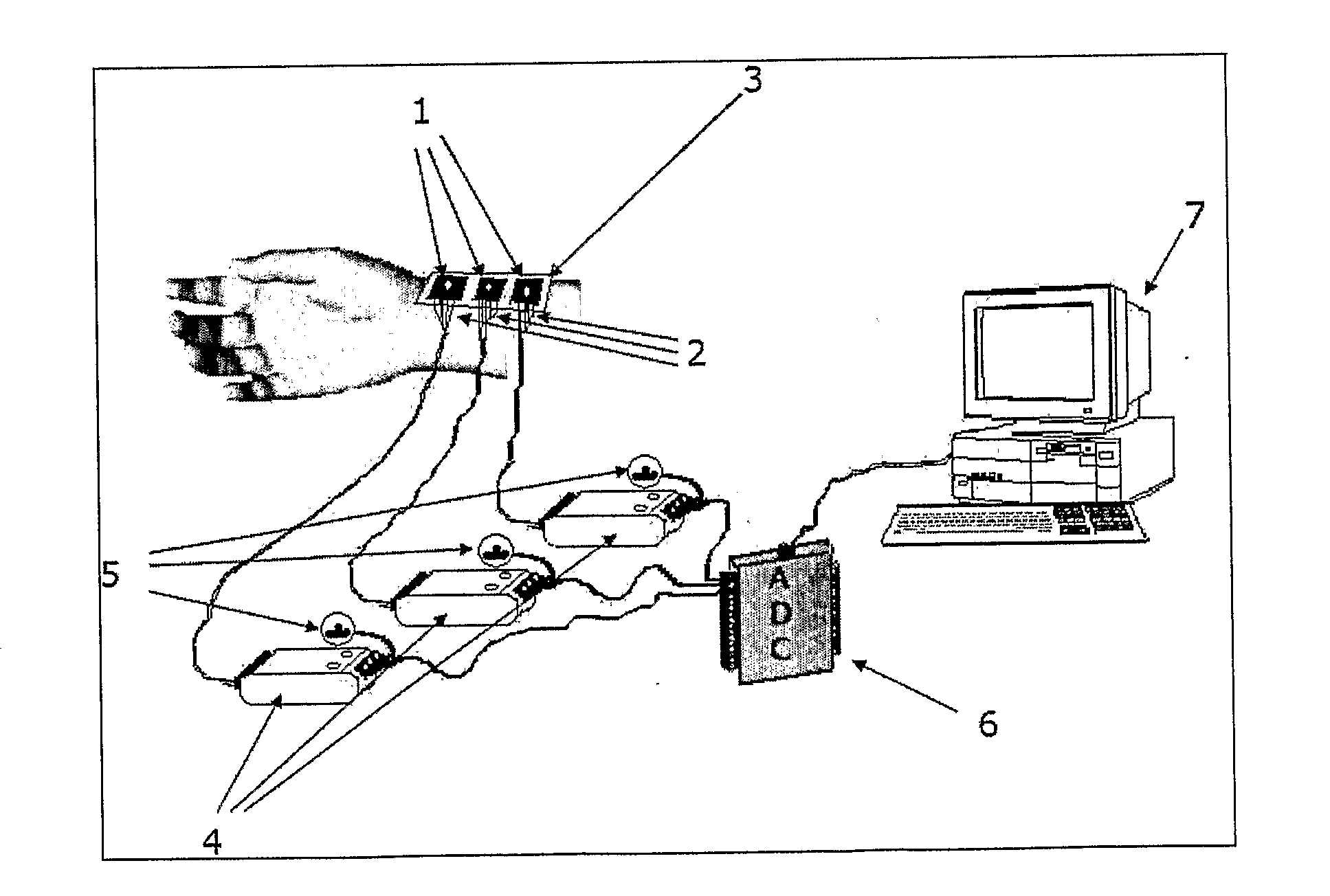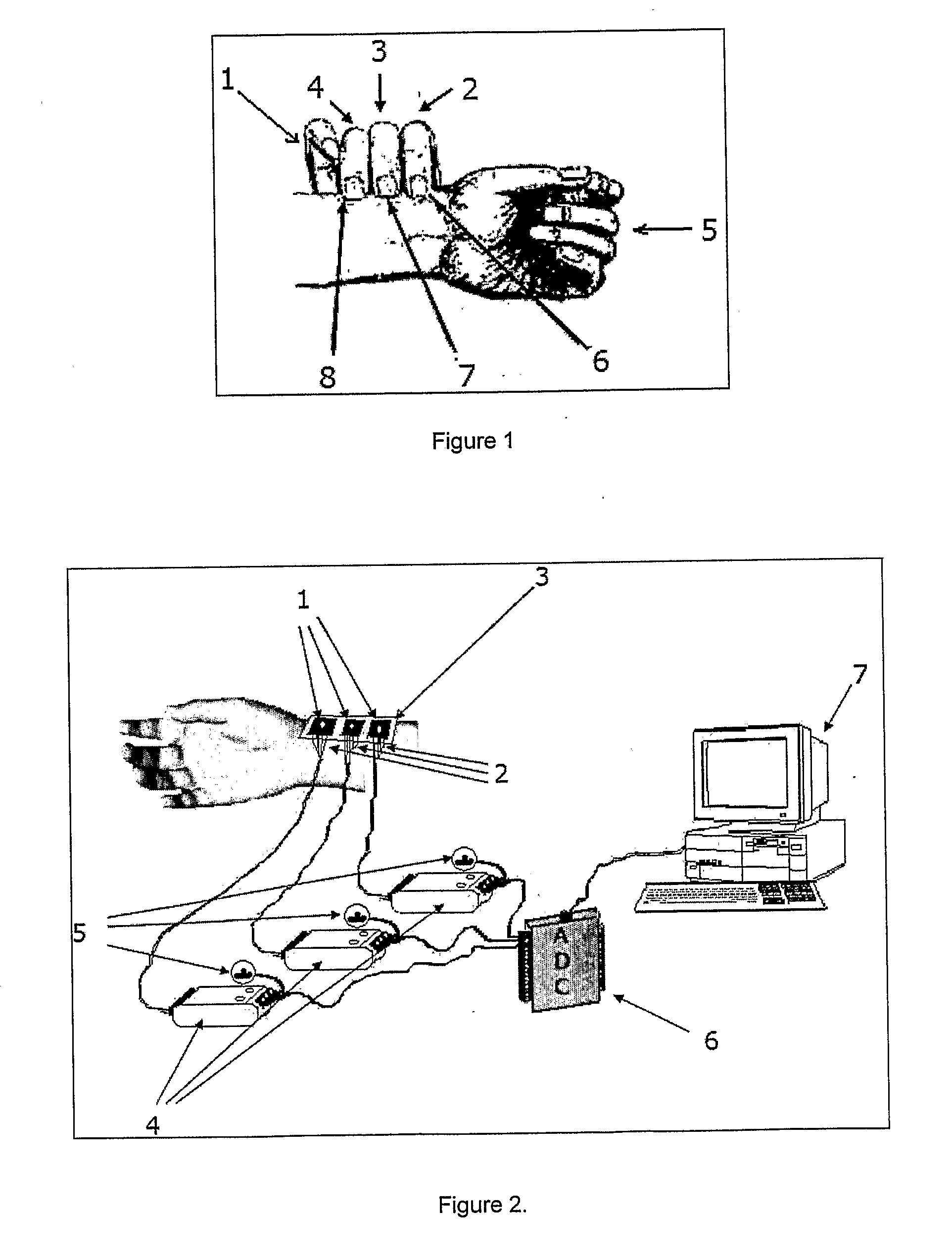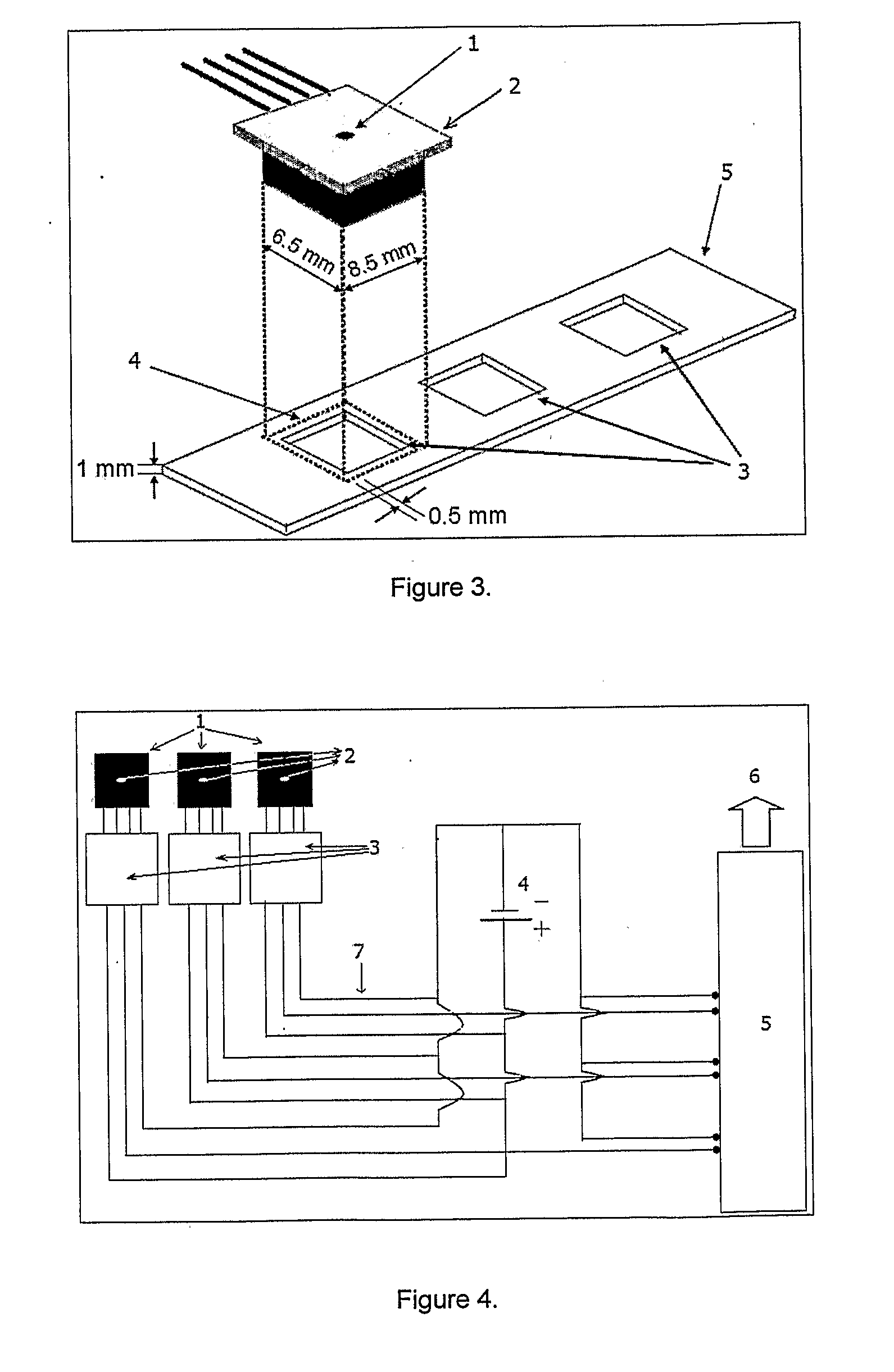Non-invasive device nadi tarangini useful for quantitave detection of arterial nadi pulse waveform
a non-invasive, pulse waveform technology, applied in the field of non-invasive devices nadi tarangini, can solve the problems of difficult to tell whether the nadi obtained using these methods is complete or not, does not support any external pressure, and cannot be fully quantitated, so as to eliminate all human errors, and reduce the risk of strok
- Summary
- Abstract
- Description
- Claims
- Application Information
AI Technical Summary
Benefits of technology
Problems solved by technology
Method used
Image
Examples
example 1
[0118]The Nadi pulses were recorded using our embodiment by placing the three pressure sensing elements, mounted on neoprene sheet, exactly at the three predetermined locations (6, 7, 8 in FIG. 1) on patient's left hand wrist, in place of the fingertips of the Ayurvedic practitioner. The three predetermined locations are vata position, pitta position and kapha position on the patient's wrist. The sampling rate of the acquisition was 500 Hz, which was enough to capture all the details. The data was collected for 1 to 5 minutes. All the three signals were individually digitized using the ADC (5 in FIG. 4) and were stored in the pulse database as vata pulse data, pitta pulse data and kapha pulse data respectively. Same procedure was followed for the patient's right hand wrist to get three more data. Therefore in the pulse database, 6 pulse signals (from vata, pitta and kapha positions on both the hands) were stored for each patient. Also the patient's information such as age, gender, p...
example 2
[0120]Pulse rate: The pulses were obtained by placing the sensor at the predetermined position for 1 to 5 minutes. Immediately after the Nadi was taken, the pulse rate was measured manually for every acquisition. The pulse rate is computed using the fundamental frequency in the Fourier spectrum of any one dosha of the 6 pulse data of the patient. The comparison of pulse rate measured from a pulse time series and that manually measured for few of the patients is given in Table 2.
example 3
[0121]Reproducibility: The Nadi pulses were acquired of person 2 (age 27) at 7 different timings throughout a morning session (8:30 am, 9:15 am, 10:00 am, 10:45 am, 11.30 am, 12.15 pm and 1.10 pm) using our invention described in above description. Apart from the person's physic, Nadi is sensitive to mental status, stresses, thoughts, etc. Because of which the nature of the pulse essentially changes. For the above mentioned 7 timings, the person was asked to relax for 5 minutes before taking the pulse. Chaos analysis was carried on all the pulse data of the 7 timings, and it was observed that the Correlation Dimensions and Largest Lyapunov exponents [reference—D. Kugiumtzis, B. Lillekjendlie, and N. Christophersen. Chaotic time series part I: Estimation of some invariant properties in state space. Modeling, Identification and Control, 15(4):205-224, 1994] of the particular dosha remain almost constant, even though the shape of pulse changes slightly. The correlation dimensions of th...
PUM
 Login to View More
Login to View More Abstract
Description
Claims
Application Information
 Login to View More
Login to View More - R&D
- Intellectual Property
- Life Sciences
- Materials
- Tech Scout
- Unparalleled Data Quality
- Higher Quality Content
- 60% Fewer Hallucinations
Browse by: Latest US Patents, China's latest patents, Technical Efficacy Thesaurus, Application Domain, Technology Topic, Popular Technical Reports.
© 2025 PatSnap. All rights reserved.Legal|Privacy policy|Modern Slavery Act Transparency Statement|Sitemap|About US| Contact US: help@patsnap.com



